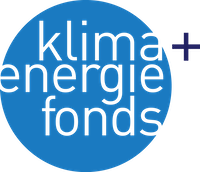BAMA Balanced Manufacturing
In 2013, when the project Balanced Manufacturing (BaMa) was initiated, the manufacturing industry focused mainly on availability, adaptability and productivity of production systems in order to increase competitiveness. The simultaneous increase in energy costs, legal pressure and public awareness and decrease in availability and security caused manufacturing companies to spotlight resource efficiency. Although a variety of methods and tools for optimization of singular aspects of energy efficiency within production facilities already existed, a systemic, comprehensive approach for analysis, evaluation and optimization of energy- and resource-flows within a production facility was lacking.
BaMa set its goal to develop a simulation-based method for monitoring, predicting and optimizing energy and resource demands of manufacturing companies under consideration of the economic success factors time, costs and quality. All relevant aspects of the facility (production, building, energy, logistics and management system) were considered.
The project started with a thorough system analysis and definition of the BaMa method. A modular approach was chosen that segments a production facility into „cubes“. Cubes have a clearly defined interface and represent a certain physical behavior that contributes to the energy balance of the overall system. For demonstration, an experimental cube, representing a basic production-unit module was constructed. Based on cube-related energy and resource flow analysis, a method to aggregate a specific product-footprint was derived. The product footprint represents a product’s expenditures concerning cost, time, energy and the environmental impact such as resulting carbon emissions in the product life cycle phase within the factory.
In a next step, the BaMa method was implemented as a customized tool chain. The tool chain allows for energy efficient operation, design and refurbishment of production plants under competitive conditions, with regard to minimal energy and resource consumption. It contains three core modules:
Monitoring: data on resource consumption is aggregated and visualized.
Prediction: allows forecasting of overall energy demand of the plant based on the product-footprint and the production schedule.
Optimization: based on data and numerical simulation-models of the cubes, this part of the tool chain improves the plant operation with regard to defined optimization targets concerning energy and economic success.
Finally, the BaMa method and tool chain were deployed at production facilities of several project partners in order to demonstrate its functionality for multiple industry sectors and to ensure national and international visibility. In addition, guidelines for the BaMa implementation process in accordance with the ISO 50001 was developed. The objective of this process is the efficient energy management and optimization of production facilities.
Downloads
Steckbrief
-
Projektnummer84746
-
KoordinatorTechnische Universität Wien Institut für Fertigungstechnik und Hochleistungslasertechnik
-
ProjektleitungFriedrich Bleicher, bleicher@ift.at
-
FörderprogrammEnergieforschung (e!MISSION)
-
Dauer01.2014 - 12.2017
-
Budget5.758.477 €


